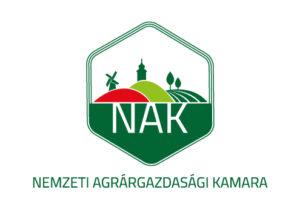Let’s keep water in the landscape! NAK is conducting a survey among more than ten thousand farmers operating in low-lying areas
The network of village farmers of the National Chamber of Agriculture conducts a national water demand survey in March. The aim of the survey to be carried out on behalf of the Ministry of Agriculture is to find out the willingness of farmers to keep water in the landscape in low-lying areas suitable for water retention.

Climate change is becoming more and more noticeable, in our country, heat records were broken in January and February this year. In addition, several large flood waves have passed through the Tisza watershed in the past period. In general, the distribution of precipitation is uneven, and due to the increase in the average annual temperature, enormous evaporation losses have occurred in recent years – all this has a negative effect on our water resources and agricultural production. The climate of our country is determined by the global air flow systems, if the cyclones do not bring moisture – as in 2022 for example – or if they condense too soon on the western border of the country, then only the waters and buffer water spaces held in the landscape give the opportunity to improve the microclimate, thereby reducing climate change arising risks, drought damage. For agricultural producers, water retention, water retention and soil moisture conservation, as well as the application of procedures that help maintain soil productivity, are vital. Adapting to changes starts with healthy soil, protecting the soil and improving its structure is a well-understood interest of farmers, these factors have a significant impact on costs and crop results, and by improving them, stress situations resulting from extreme weather can be reduced, since the soil is the largest water-holding medium. The (excess) waters must be kept in place, and the cultivation branch of the given area must be rethought in accordance with the water and soil properties of the area, and if necessary, it must be transformed in order to improve the resilience of the area and the production area against climate change.
In the course of the survey, which is now starting, with the cooperation of the NAK village farmer network, farmers’ knowledge, needs, and willingness regarding territorial water retention solutions will be mapped, as well as the conditions under which farmers are able and able to contribute to their application.
The professional background of the research is provided by the Agrárközgazdasági Intézet Nonprofit Kft., the Irrigation and Water Management Research Center of the Institute of Environmental Sciences of the Hungarian University of Agrarian and Life Sciences, and the National Directorate General of Water. The village farmers visit farmers operating in low-lying, potentially water-retaining areas designated on the basis of natural, environmental and technical aspects, with a questionnaire consisting of 28 questions. The pre-determined low-lying area of nearly 40,000 hectares affects the 250,000 hectares of agricultural land of around ten thousand farmers. It is important to note that farmers who are not active in these areas can also indicate their needs, NAK asks them to contact their village farmer in this case. After the survey, the chamber also helps the affected producers by providing professional knowledge and organizes workshops to introduce them to the methods of sustainable, ecosystem-based territorial water management. Professional guidelines, legal and support tools – including non-productive investment subsidies for water protection purposes, which will soon be opened within the framework of the Common Agricultural Policy – will also help conscious economic decisions.
NAK
Related news
Climate-tolerant alternative in arable fields: peanuts could be one of the winners of climate change
🎧 Hallgasd a cikket: Lejátszás Szünet Folytatás Leállítás Nyelv: Auto…
Read more >This year, 10 percent more new wine was produced than last year
🎧 Hallgasd a cikket: Lejátszás Szünet Folytatás Leállítás Nyelv: Auto…
Read more >More than 100 Hungarian farmers also demonstrated in Brussels
🎧 Hallgasd a cikket: Lejátszás Szünet Folytatás Leállítás Nyelv: Auto…
Read more >Related news
The New Year’s Eve fireworks fair is back: temporary sales will start in department store parking lots at the end of December
🎧 Hallgasd a cikket: Lejátszás Szünet Folytatás Leállítás Nyelv: Auto…
Read more >The first Eastern European non-alcoholic beer turns 50
🎧 Hallgasd a cikket: Lejátszás Szünet Folytatás Leállítás Nyelv: Auto…
Read more >Sausage: pork prices are already going down, but they won’t be cheaper in stores – a significant correction may come in the spring at the earliest
🎧 Hallgasd a cikket: Lejátszás Szünet Folytatás Leállítás Nyelv: Auto…
Read more >






